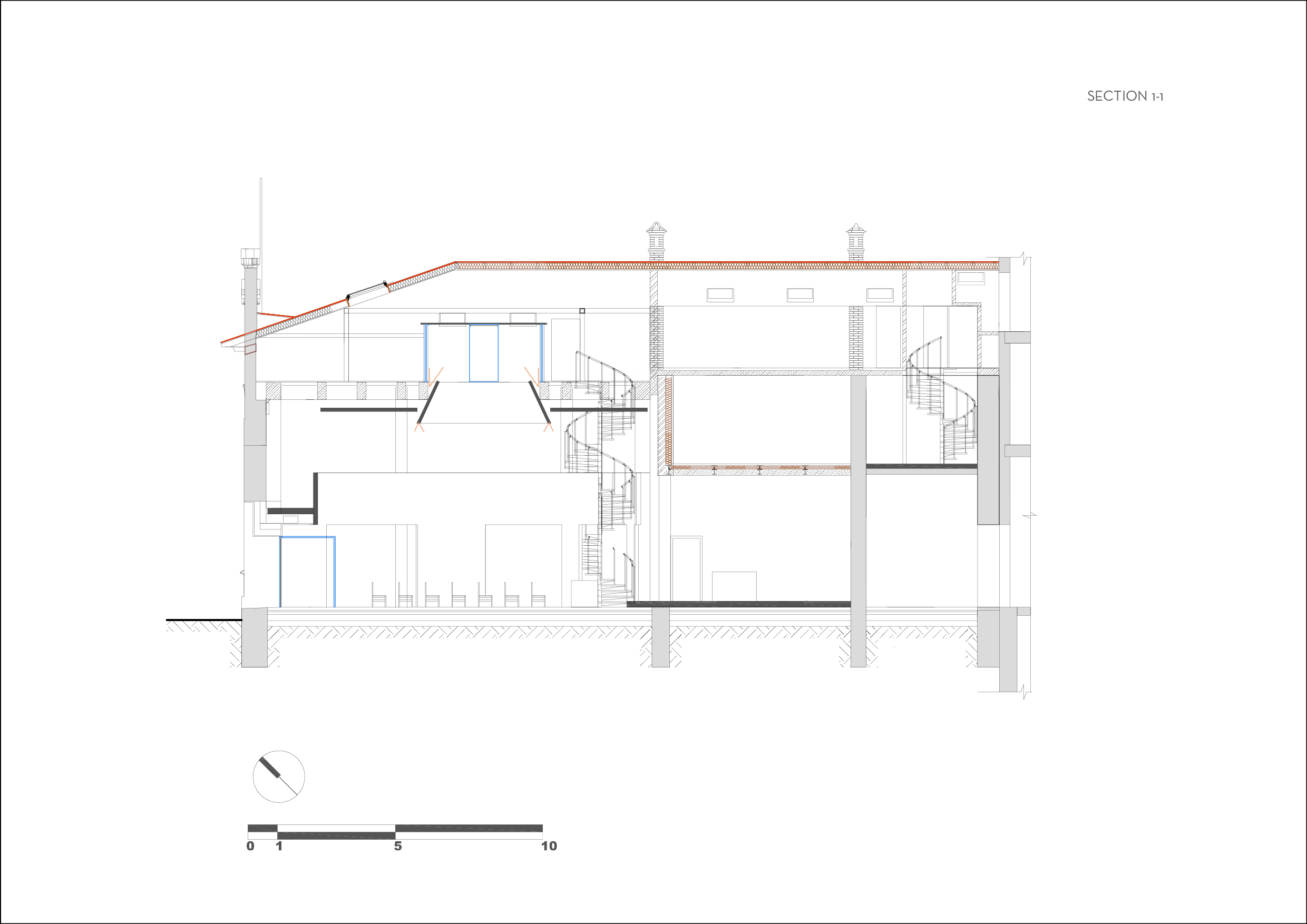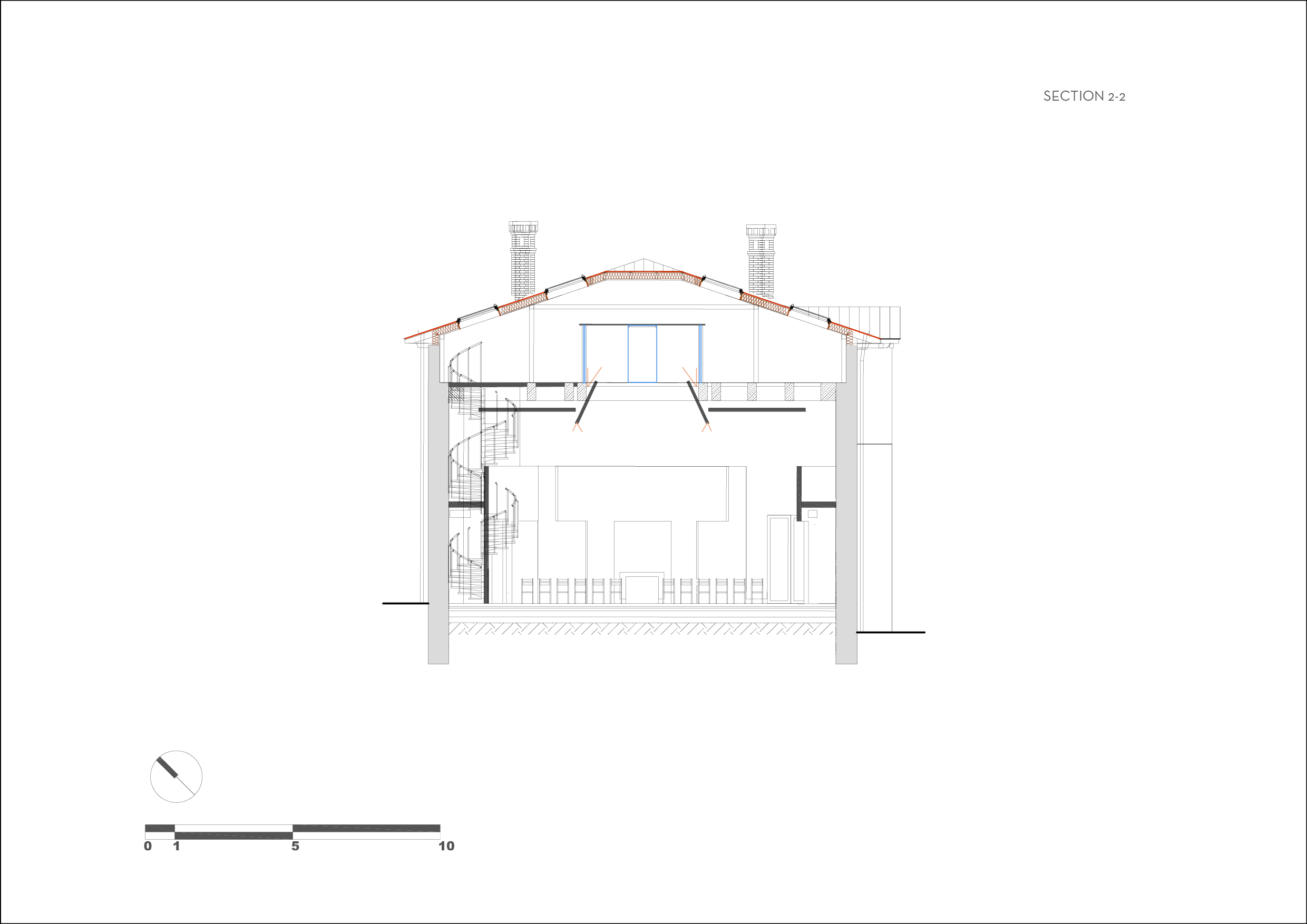Assembly hall
of the pastoral center care of orphans UGCC in Lviv
Year: 2024
Categories: Sacral, Public
Location: Lviv, Ukraine
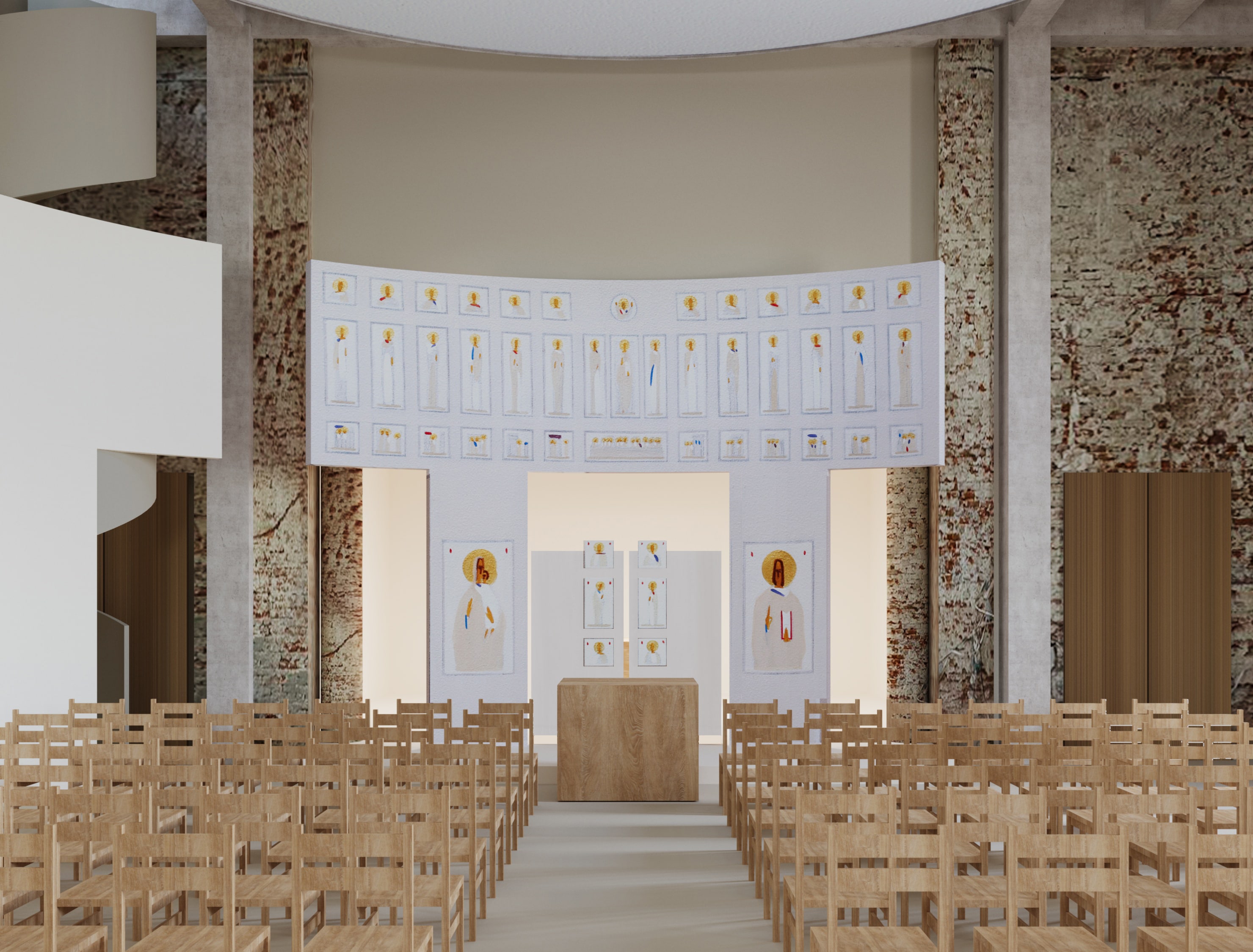
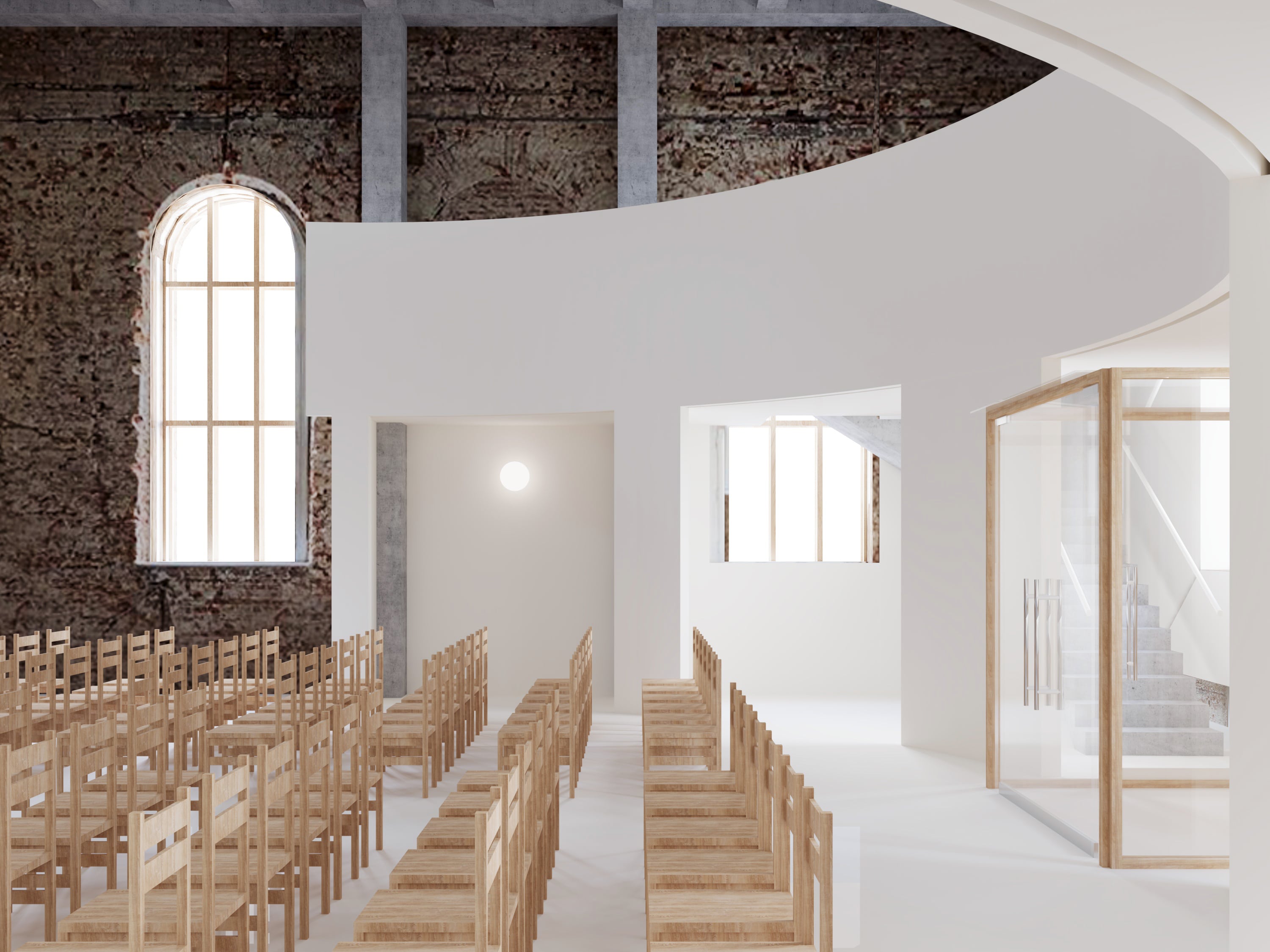
HISTORICAL CONTEXT AND CURRENT CONDITION
The building was constructed in the 1840s as a Craft Society Hall. It is currently in an emergency condition and has been transferred by the city for the establishment of a Center for the Care of Orphans. The reconstruction of the hall is carried out within the existing external parameters.
Located in the historical district of Lviv, the building retains authentic plasterwork, which prohibits external wall insulation. However, the project includes the use of the attic space with roof insulation. Large south- and east-facing windows allow generous daylight and solar heat—an important advantage in Lviv’s climate. The building does not have a basement, which helps the floors preserve the natural warmth of the soil. Vestibules (tambours) are arranged at all external entrances.
The authentic foundations, walls, partitions, windows, and doors have been preserved for future use. Sand from the dismantling of the emergency ceiling will be reused for paving the surrounding territory, while bricks from dismantled partitions will be reused for wall repairs. Sound wooden roof structures will be preserved; damaged elements will be repurposed for interior design and furniture. All new construction and finishing materials are ecologically clean and radiation safe.
The heating system utilizes channel and wall-mounted units of a multi-zone air-conditioning system with automated control via leading remotes and temperature sensors. Regulation is achieved by adjusting fan speed and freon flow rate, while a heat pump serves as the primary heat source.
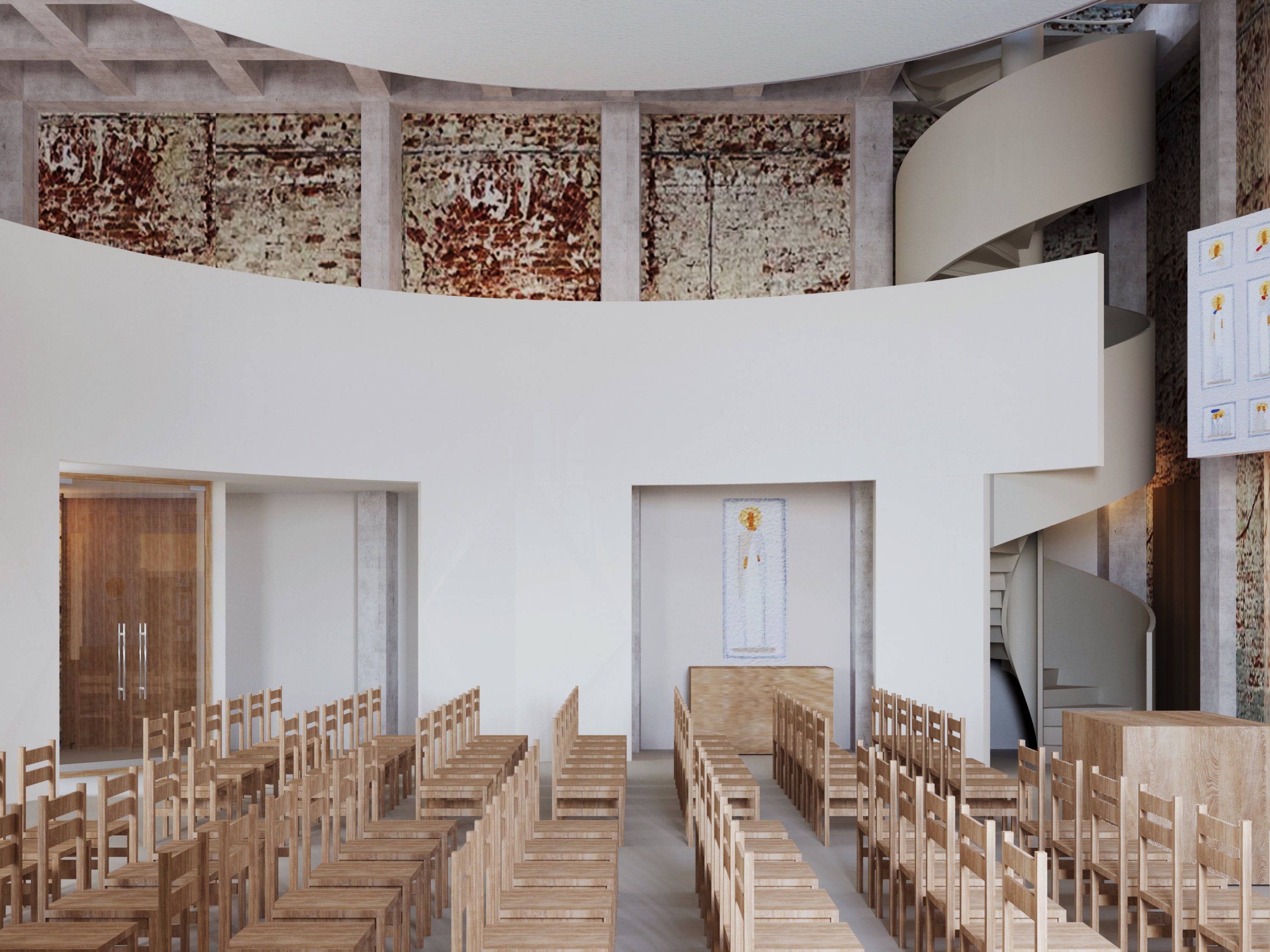
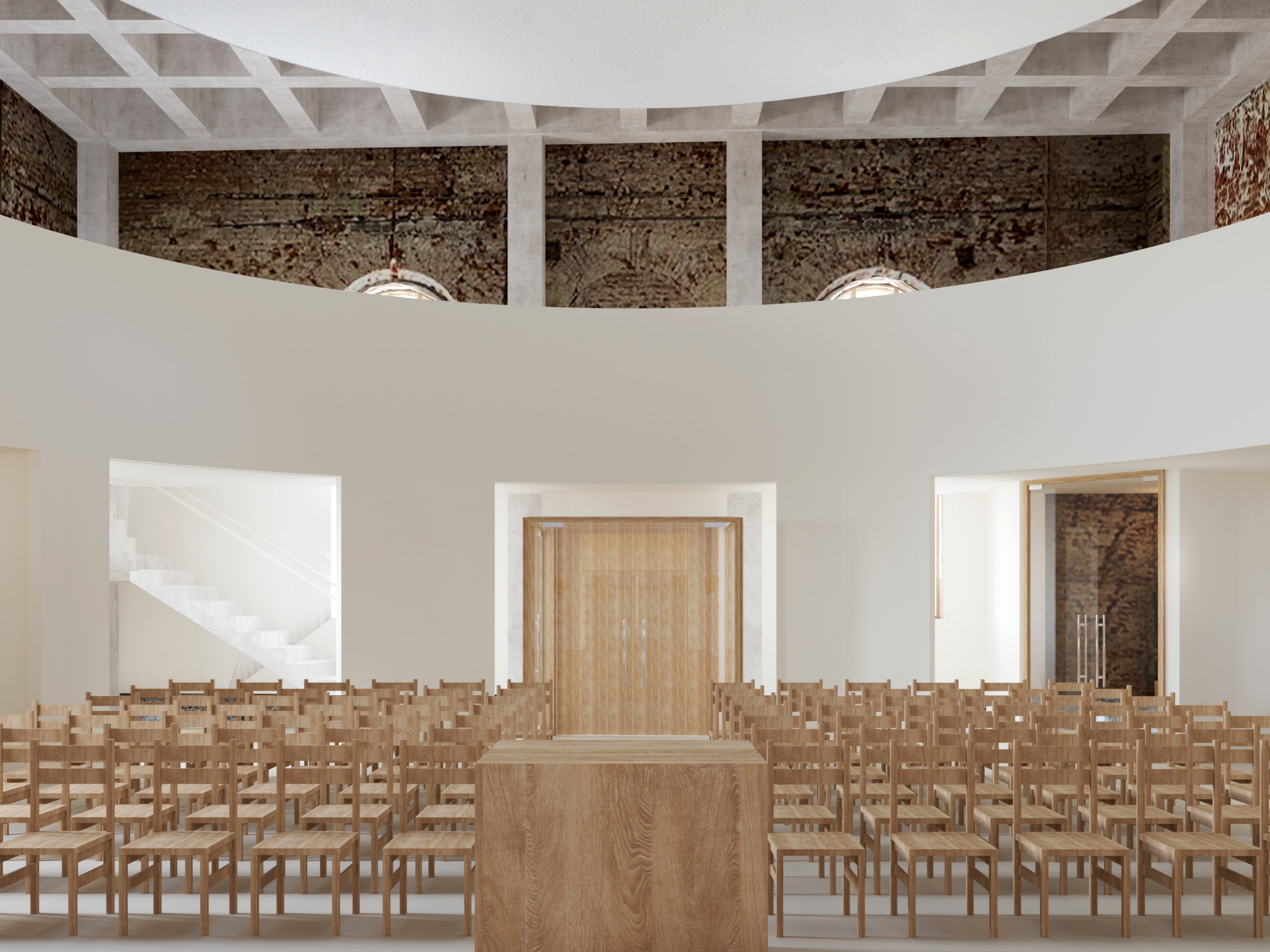
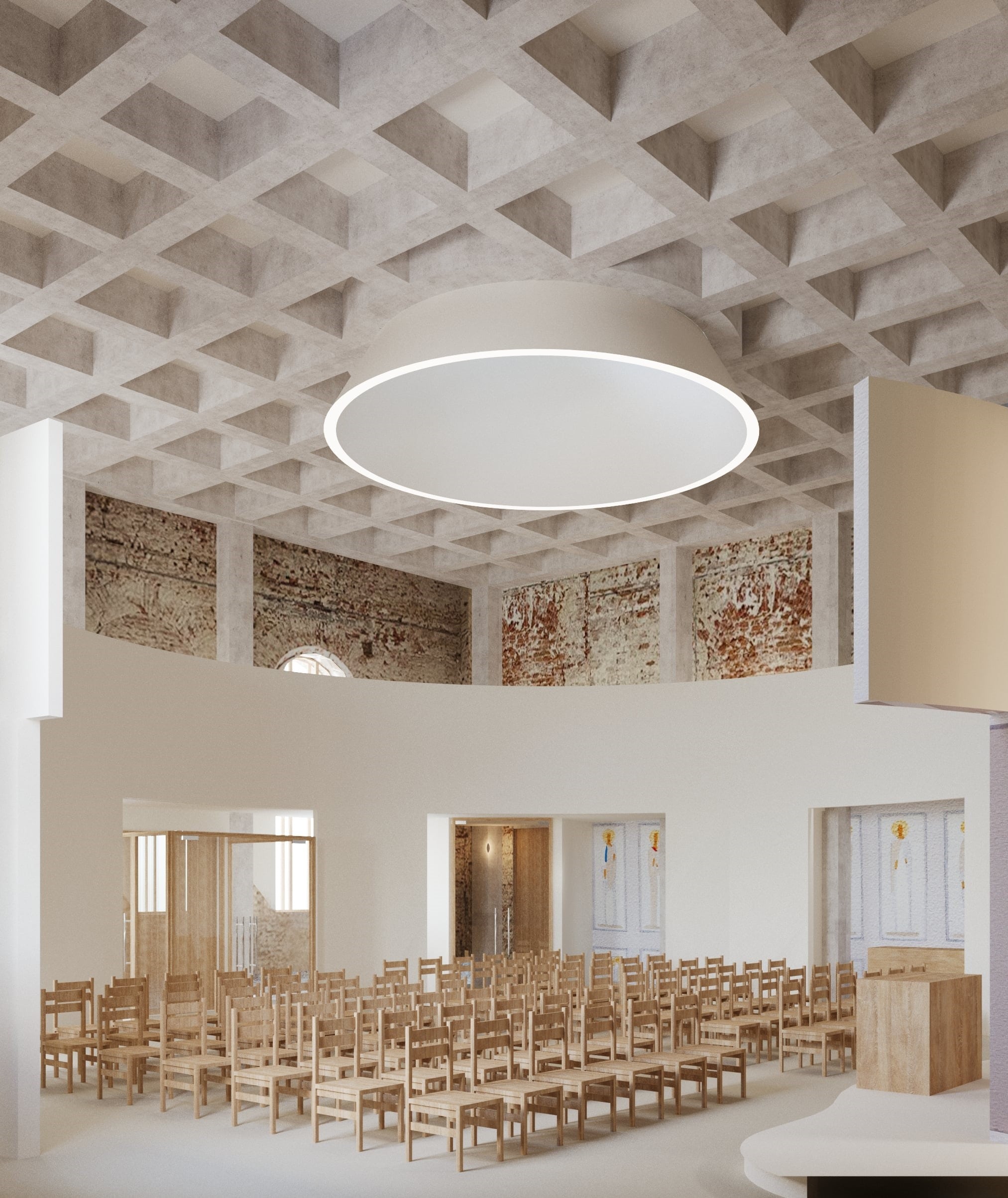
The project includes surface and rainwater drainage from the foundation base. The adjacent area will be improved through the repair of existing roads and sidewalks, the creation of a driveway, and the enhancement of green lawns. Landscaping will focus on creating aesthetically appealing gardens that attract wildlife, promote biodiversity, and reduce carbon emissions. The use of perennial plants minimizes maintenance and environmental impact. All selected species are hardy, capable of thriving in partial shade or full sun.
As the reconstruction is carried out within the existing footprint, no additional land use transformation is required. Given the building’s location in a historical zone, its appearance will remain largely unchanged, preserving the authentic character of the street and its surroundings.
The building is rectangular in plan, two stories with an attic, and without a basement. Access to the second floor is provided from the four-story adjoining section. According to the technical inspection report, the building is in a condition unsuitable for normal operation, with local signs of structural failure.
Before design work began, the client expressed all functional and aesthetic wishes, which were fully considered in the design process. The client welcomed alternative proposals from the architects, evaluated them, and suggested further steps. The design process was dynamic and collaborative, involving also the owners and users of neighboring buildings regarding access for waterproofing and utility networks.
After reconstruction, the hall will be used by the Orphan Care Center for liturgies, concerts, children’s performances, and lectures. The building will remain open to all local residents, offering much-needed public space in the area. Several rooms will serve as classrooms for preschool children, while the existing playground and football field on the site will continue to operate.
s









